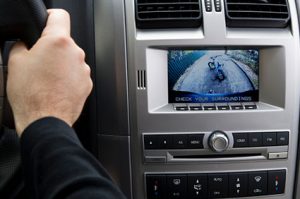High resolution lenses for machine vision — standard and custom lens design
Camera Technologies In NASCAR Vehicles
High Resolution Lenses for machine vision, instrumentation, inspection and vibration-sensitive applications. Standard and custom hi-res lens assemblies.

Prior to the advancements of camera technology, those that allowed images to be captured even in high-vibration settings, what happened on a NASCAR track and more importantly, inside a car, were sometimes a mystery. The cameras mounted around the racetrack could capture the cars as they sped past but the spectators weren’t able to get “up close and personal” to see what went on behind the wheel of these speeding vehicles.
In 1983, NASCAR installed the first in-car camera during the Daytona 500 and it allowed spectators a more personal view of the racetrack. The in-car cameras were remote controlled and send a signal to a helicopter that was hovering over the track. The camera inside the helicopter captured the signal and transmitted it to a trailer where the images were processed before being sent out to the viewing public.
For many spectators, the views captured were dizzying as the cameras were not of the quality we have today that can capture images in high-vibration settings. Today’s cameras, lenses and sensors can automatically make adjustments for ever-shifting landscapes and that makes for a better viewing experience.
Technology has kept pace with the race cars and in the 1990s the cameras were mounted in more cars and were found in more places including: the roof, the hood of the vehicle, the car’s bumpers and even more to enhance the public’s feeling of being in the action. In the 1990s the sport also experimented with using infrared brake cameras to show the home viewers just how hot the brakes became when a driver rounded a corner.
These high definition cameras offer a better viewing experience with each iteration. Camera technicians install the cameras in the car to both provide the home viewer a great experience but to make certain none of the cameras interfere with the drivers’ line of sight or his driving.
Which NASCAR vehicles get cameras?
As any race car fan knows, not all vehicles are equipped with the cameras; they typically go in the cars of the most popular drivers, those the broadcasters want to see or that the fans are clamoring for. Advertisers, too, can opt to pay the price of having a camera installed in a vehicle for a season if they are willing to pay the price of more than $50,000 to do so.
How does the image get from the car to your living room?
As noted, in the past, the signals from the in-car cameras were projected to a hovering helicopter, but that has been replaced with a more cost efficient method. Today’s process involves having images broadcast to receivers that are placed along the bleachers at a racetrack. The signals/images are picked up by the receivers and instantly transmitted to a trailer where technicians process it for and it is sent to the broadcast network.
Technological advances will continue to lead to clearer images and could even lead to more infrared technologies being placed inside the vehicle, the engine or other places so viewers can see the conditions under which driver’s race.
Universe Optics designs and manufactures optical lenses for industrial, medical, high tech and electronic applications.